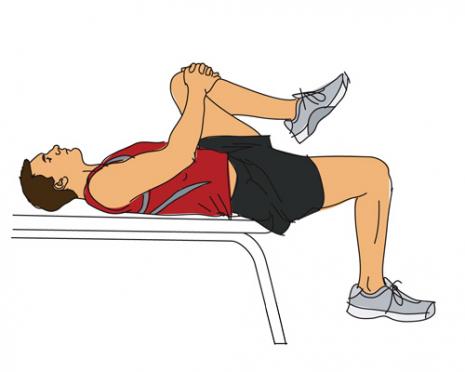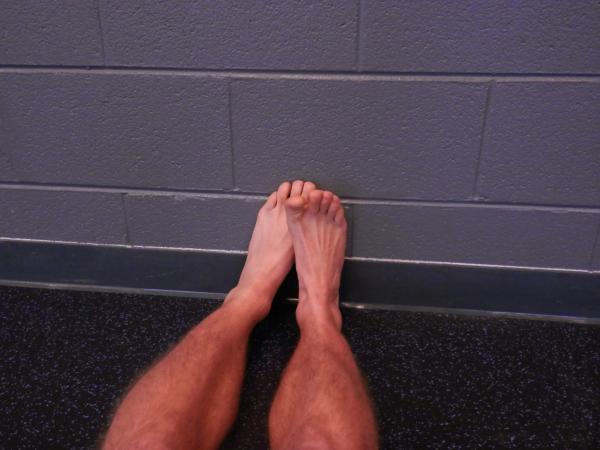Your Tendons are Junky and that is why your Ankles Hurt
By: Dr. Mike Caisse DPT
Without optimal joint mobility, tissue elasticity and malleability none of us will ever reach or know our genetic potential. In fact, we will continue to fail over and over again to leverage our true physical capacities and most of us will sustain multiple injuries while trying. Most of our best athletes will ultimately fail to ever see their full potential because they do not understand the benefits of unlocking their bodies. Kstar once said that he’s only seen perhaps one or two of his elite athletes reach close to 90% of what they are capable of. This statistic is simply sad and disappointing, because we have the resources available to reach everyone, yet most of us are not leveraging this information. An example you probably are familiar with is Kobe Bryant and his Achilles tendon rupture. This injury was completely preventable and likely happened as a result of this athlete’s lack of knowledge regarding a combination of things including the importance of mobility and suppleness of the soft tissues and joints thus resulting to ankle tendon pain.
We are very lucky to be involved in such a well-connected community as Crossfit. In my opinion, we have access to some of the most intelligent, practical and well-read professionals of their respective fields in the world. Think about it… if we want to know more about nutrition, we have Dr Barry Sears. If we want to know how to run, we have Brian MacKenzie. If we want to know about gymnastics, we have Carl Paoli. Power lifting, Jesse Burdick. Oly lifting, Mike Burgener. And lastly, however, most importantly, if we want to know how to move and how to reach our genetic potential we have our beloved leader Kelly Starrett- MWOD Pro; and locally in San Diego of course, Movement-Rx.
I am a doctor of physiotherapy, as is my colleague Dr. Theresa Larson (creator of Movement-Rx), and we see athletes everyday ranging from those who are devoted to training and competing in the Crossfit games to those who are working professionals who may sit at a desk for forty hours a week. Something that might be surprising but true is both of these aforementioned cohorts of people on average cannot even reach a neutral/normal joint position at the hip or ankle. And they are likely lacking 50% or more of their available range of motion in these joints.
What does it mean…?
Hip Extension
Consider this, a human needs about 20 degrees of hip extension range of motion in order to move normally. To test yourself, try the following:
TEST POSITION. Lay on your back on the edge of a table (a bed or sofa will do) with thighs and legs hanging off so that the lower back and buttocks are just supported, knees relaxed
TEST. Pull your left knee toward your chest until the lower back is flattened against the table. The right thigh should hang below the level of the table about 20–30 degrees. Then switch legs and repeat the test.
The average range of motion for the leg hanging off the table is 20 degrees. The tissues in question are the hip flexors, Psoas major, psoas minor, iliacus, and rectus femoris.
Ankle Dorsiflexion
Also, we humans need 20 degrees of ankle dorsiflexion range of motion to perform basic movements that a two year old can do, like squatting. To test yourself, do the following:
TEST POSITION. Lay on your back with your feet flat against the wall (body perpendicular to
the wall).
TEST. Keep the heel in contact with the wall while attempting to pull the balls of your feet and toes away from wall. There should be a space of 1–2 inches between the ball of foot and the wall. Bear in mind that this test primarily emphasizes the gastrocnemius (calf muscle), while the alternative test below is more indicative of restrictions in the soleus, the other plantar flexors, and/or the ankle joint itself. Test both sides.
ALTERNATIVE TEST. Stand facing a wall with the toes roughly 2–3 inches from the wall. Attempt to bend the knees and touch them to the wall while keeping the heels on the floor. If the knee(s) touch, move backward in increments of about half an inch until the point at which the knees can no longer touch the wall. At the last point in which the knee(s) can still touch the wall, the distance between the toes and the wall should be about 3 inches. An inability to touch the wall is a significant restriction, especially if occurring on one side only. As this alternative test is performed in full weight bearing, there may be considerably more than the 20 degrees of dorsiflexion suggested above. The tissues in question are the foot, ankle, toe flexors, calf, Achilles, ankle and foot flexor muscles.
If we cannot get our bodies into these basic positions, then we certainly cannot expect to run, jump, press, squat, etc. without pain and eventually tissue failure and serious pathology.
It is our mission and personal agenda at Movement-Rx to teach and spread the message to everyone about taking responsibility for your bodies and performing the basic maintenance required in order to live a long and active life without pain. The information is here and all it takes is fifteen minutes of your time each day to improve your movement. There is no reason to be held hostage from achieving your goals due to a mobility issue.
If you want additional help in improving your performance, durability, and recovery, don’t limit yourself to your own knowledge and come see someone who can help you sort it out.
Sources:
Improve the sliding/gliding surfaces of the posterior structures of the lower leg (Bone Saw):
Performance Outcomes After Repair of Complete Achilles Tendon Ruptures in National Basketball Association Players: http://ajs.sagepub.com/content/early/2013/06/03/0363546513490659.abstract
Crude Overview of Ankle Tendinitis/Tendinopathy (do not pay attention to the information given in the last 5s of the video): http://www.youtube.com/watch?v=p5vnf0VLvxQ
1. Norkin CC, White DJ. Measurement of Joint Motion: A Guide to Goniometry. 3rd Ed. Philadelphia:
FA Davis Company, 2003


